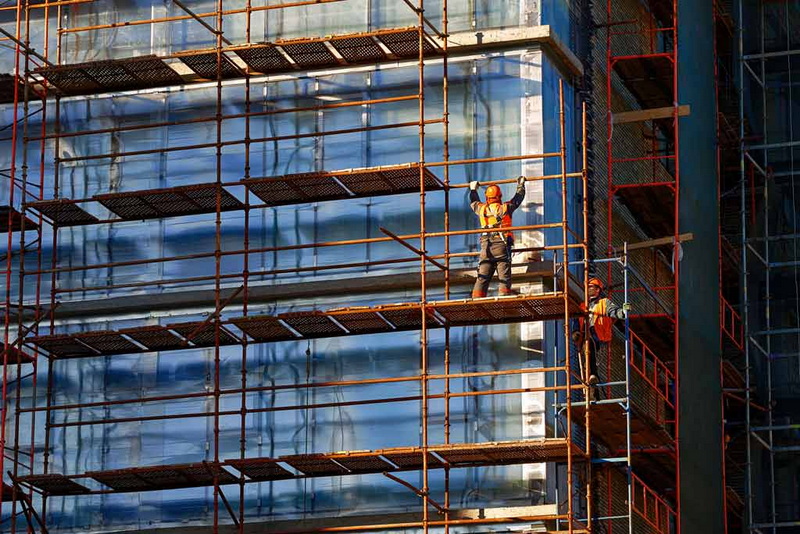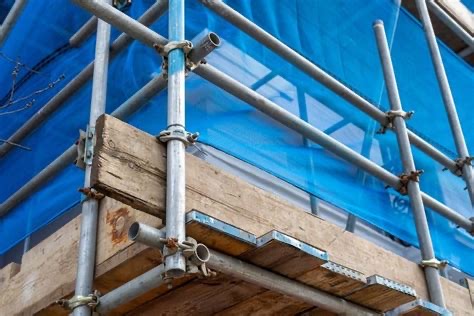Content Menu
● What Is Aluminum Tube and Clamp Scaffolding?
>> Key Components
>> Material Strength and Engineering
>> Load Capacity
>> Real-World Performance
● Comparing Aluminum and Steel Tube and Clamp Scaffolding
● Typical Applications in Construction
● Assembly, Safety, and Maintenance Best Practices
>> Assembly Guidelines
>> Safety Practices
>> Maintenance Tips
● Components and Assembly
● Advanced Tips for Maximizing Performance
● Common Mistakes and How to Avoid Them
● Environmental and Economic Benefits of Aluminum Scaffolding
>> Environmental Impact
>> Economic Advantages
● Real-World Case Studies and Testimonials
>> Case Study 1: High-Rise Facade Restoration
>> Case Study 2: Industrial Plant Maintenance
>> Testimonial
● Conclusion
● FAQ
>> 1. Is aluminum tube and clamp scaffolding suitable for heavy-duty construction?
>> 2. How does aluminum tube and clamp scaffolding compare to steel in strength?
>> 3. Can aluminum tube and clamp scaffolding be used outdoors?
>> 4. What are the main safety considerations when using aluminum tube and clamp scaffolding?
>> 5. How long does aluminum tube and clamp scaffolding last?
Aluminum tube and clamp scaffolding has become a popular choice for modern construction sites, renovation projects, and industrial maintenance. Its lightweight, corrosion-resistant properties and adaptable design make it a compelling alternative to traditional steel scaffolding. But is aluminum tube and clamp scaffolding strong enough for construction? This comprehensive guide explores the science, engineering, practical applications, and safety considerations behind aluminum tube and clamp scaffolding, helping you decide if it's the right solution for your next project.

What Is Aluminum Tube and Clamp Scaffolding?
Aluminum tube and clamp scaffolding is a modular access system made from hollow aluminum tubes connected by clamps (also called couplers). The tubes typically have a diameter of about 48.3mm (1.9 inches), and the clamps allow for connections at any angle, making the system highly adaptable to complex structures and irregular building shapes.
Key Components
- Tubes: High-strength aluminum alloy, lightweight, corrosion-resistant, and available in various lengths.
- Clamps: Forged steel or aluminum, securing tubes at right angles or other configurations.
- Platforms: Wooden or metal planks placed on horizontal tubes for working surfaces.
- Accessories: Guardrails, base plates, braces, toe boards, and safety nets for enhanced safety and stability.
Material Strength and Engineering
Despite its lightweight nature, aluminum tube and clamp scaffolding is engineered for strength. The most common alloy used is 6082-T6, prized for its high tensile strength and durability. Aluminum tubes usually have wall thicknesses ranging from 2.6mm to 4mm, providing robust support for both workers and materials.
- Tensile Strength: Alloy 6082-T6 offers excellent mechanical properties, making the tubes strong enough for demanding construction environments.
- Breaking Pull-Off Force: The joints in aluminum scaffolding can reach a breaking pull-off force of 4100–4400 kg, far exceeding typical load requirements.
Load Capacity
Aluminum scaffolding systems are classified by their load-bearing capacity:
| Duty Rating | Maximum Load Capacity (per platform) |
| Light-duty | 120 kg |
| Medium-duty | 240 kg |
| Heavy-duty | 240+ kg |
For most construction tasks-including facade work, roofing, and structural repairs-medium- and heavy-duty aluminum tube and clamp scaffolding is more than adequate.
Real-World Performance
- Aluminum scaffolding is widely used for both interior and exterior construction, industrial maintenance, and event staging.
- Its high strength-to-weight ratio allows it to support multiple workers, tools, and materials safely.
Comparing Aluminum and Steel Tube and Clamp Scaffolding
| Feature | Aluminum Tube and Clamp Scaffolding | Steel Scaffolding |
| Weight | Lightweight (~1.67 kg/m) | Heavier (~2.5 kg/m or more) |
| Corrosion Resistance | Excellent, naturally corrosion-resistant | Prone to rust without coating |
| Durability | Strong, suitable for heavy loads | Very strong, excellent load capacity |
| Ease of Assembly | Easier due to light weight | More labor-intensive |
| Weather Resistance | Withstands rain, UV, snow, temperature changes | Requires maintenance |
| Cost | Higher initial cost, lower maintenance | Lower initial cost, higher maintenance |
| Service Life | 20+ years with proper care | Shorter if not maintained |
Aluminum tube and clamp scaffolding is three times lighter than steel, making it easier and faster to assemble, disassemble, and transport. Its corrosion resistance ensures a long lifespan, even in harsh outdoor environments.
Typical Applications in Construction
Aluminum tube and clamp scaffolding is used across a wide range of construction and industrial environments:
- Construction Sites: Building facades, roofing, structural repairs, and high-rise access.
- Event Staging: Temporary stages, lighting grids, and platforms for concerts and festivals.
- Maintenance and Repairs: Bridge inspections, window cleaning, and exterior painting.
- Industrial Plants: Access platforms for equipment servicing and shutdowns.
- Temporary Access: Landscaping, tree trimming, and other outdoor projects.
Its modularity and adaptability make it especially valuable for projects with irregular shapes, uneven terrain, or frequent reconfiguration needs.
Assembly, Safety, and Maintenance Best Practices
Assembly Guidelines
- Erect scaffolding on a stable, level base using base plates or adjustable screw jacks.
- Use diagonal bracing to increase stability against wind loads.
- Tighten clamps to the manufacturer's recommended torque (typically around 45 foot-pounds).
- Install guardrails, toe boards, and safety nets where required.
- Adhere to the specified load limits of the aluminum tubes and clamps.
Safety Practices
- Avoid overloading platforms with excessive workers, tools, or materials.
- Do not use scaffolding in extreme weather conditions such as high winds or ice.
- Inspect scaffolding after storms or heavy rain for any loosening or damage.
- Use personal protective equipment (PPE) such as harnesses and lifelines.
- Ensure all workers are trained in scaffold safety and fall prevention.
Maintenance Tips
- Regular Cleaning: Remove dirt, mud, and debris to prevent slipping and corrosion.
- Inspection: Check frequently for dents, cracks, or clamp wear.
- Storage: Store tubes and clamps in a dry, covered area to prolong lifespan.
- Lubrication: Apply anti-seize compounds on clamps to prevent galling and ease assembly.
- Repair: Replace any damaged components immediately to maintain safety.

Components and Assembly
- Tubes: Main structural element, available in various lengths.
- Clamps: Right-angle and swivel clamps for flexible connections.
- Base Plates: Distribute weight and stabilize the scaffold.
- Braces: Diagonal and horizontal braces for rigidity.
- Platforms: Non-slip surfaces for worker safety.
- Lay Out Base Plates: Position on stable, level ground.
- Assemble Vertical Tubes: Attach using right-angle clamps.
- Install Horizontal Tubes: Secure at desired platform heights.
- Add Diagonal Bracing: Increase structural stability.
- Install Platforms: Place planks or decking on horizontal tubes.
- Add Guardrails and Toe Boards: Enhance worker safety.
- Final Inspection: Ensure all clamps are tight and components secure.
Advanced Tips for Maximizing Performance
- Standardize Inventory: Use compatible tubes and clamps to simplify assembly and maintenance.
- Invest in Training: Ensure all workers are certified in scaffold assembly and safety.
- Schedule Regular Inspections: Identify and address wear or damage before it becomes a hazard.
- Track Asset Usage: Use inventory management systems to monitor component condition and location.
- Adapt to Project Needs: Take advantage of the modularity to tailor the scaffold to each unique project.
Common Mistakes and How to Avoid Them
- Ignoring Load Ratings: Always adhere to manufacturer-specified load limits.
- Improper Assembly: Follow assembly instructions and use the correct torque for clamps.
- Skipping Inspections: Inspect before each use and after adverse weather events.
- Overlooking Accessories: Don't neglect guardrails, toe boards, and stabilizers.
- Mixing Incompatible Parts: Use only compatible tubes and clamps to ensure structural integrity.
Environmental and Economic Benefits of Aluminum Scaffolding
Environmental Impact
Aluminum tube and clamp scaffolding is more environmentally friendly than many alternatives:
- Recyclability: Aluminum is 100% recyclable without loss of strength or quality. At the end of its life, scaffolding can be fully recycled, reducing landfill waste.
- Lower Carbon Footprint: The light weight of aluminum means less fuel is needed for transportation, lowering greenhouse gas emissions.
- Longevity: Its resistance to rust and corrosion means aluminum scaffolding lasts longer, reducing the need for frequent replacements.
Economic Advantages
- Reduced Labor Costs: The lightweight nature of aluminum scaffolding allows for faster assembly and dismantling, saving on labor hours.
- Lower Transportation Costs: More material can be transported per truckload, reducing shipping fees.
- Minimal Maintenance: No need for regular painting or rust treatment, decreasing ongoing maintenance expenses.
- High Resale Value: Used aluminum scaffolding retains value due to its durability and demand in the market.
Real-World Case Studies and Testimonials
Case Study 1: High-Rise Facade Restoration
A major contractor in New York City used aluminum tube and clamp scaffolding for a 30-story facade restoration. The lightweight system allowed for rapid assembly and repositioning, even in tight urban spaces. The project manager reported a 25% reduction in labor costs and zero incidents of structural failure.
Case Study 2: Industrial Plant Maintenance
An industrial maintenance team in Houston selected aluminum scaffolding for shutdown work inside a chemical plant. The corrosion resistance of aluminum was critical due to the humid, chemical-laden environment. The scaffolding performed flawlessly, with no signs of degradation after repeated use.
Testimonial
“We switched to aluminum tube and clamp scaffolding for our commercial projects and have never looked back. It's easy to move, quick to set up, and strong enough for everything we throw at it.”
- Mark T., Construction Supervisor
Conclusion
Aluminum tube and clamp scaffolding is strong enough for construction when properly engineered, assembled, and maintained. Its high-strength alloys, excellent corrosion resistance, and adaptable design make it suitable for a wide range of construction and industrial applications. While steel scaffolding may offer higher ultimate load capacities, aluminum systems provide ample strength for most projects-along with significant advantages in weight, ease of handling, and durability. By following best practices for assembly, safety, and maintenance, aluminum tube and clamp scaffolding delivers reliable, long-lasting performance on even the most demanding job sites.

FAQ
1. Is aluminum tube and clamp scaffolding suitable for heavy-duty construction?
Yes, when engineered for heavy-duty use, aluminum tube and clamp scaffolding can safely support loads exceeding 240 kg per platform. Always check the manufacturer's specifications and ensure proper assembly for heavy-duty applications.
2. How does aluminum tube and clamp scaffolding compare to steel in strength?
Steel is generally stronger, but aluminum scaffolding can be designed to meet most construction needs. Aluminum's high strength-to-weight ratio, corrosion resistance, and ease of handling often outweigh the slightly lower load capacity for many projects.
3. Can aluminum tube and clamp scaffolding be used outdoors?
Absolutely. Aluminum is naturally resistant to corrosion and weathering, making it ideal for outdoor use in rain, snow, and UV exposure. It requires less maintenance than steel in harsh environments.
4. What are the main safety considerations when using aluminum tube and clamp scaffolding?
Ensure proper assembly, do not exceed load limits, use all required safety accessories (guardrails, toe boards, stabilizers), and inspect regularly. Train workers in scaffold safety and fall protection.
5. How long does aluminum tube and clamp scaffolding last?
With proper care and maintenance, aluminum scaffolding can last 20 years or more. Its resistance to rust and corrosion ensures a long service life, even with frequent outdoor use.






















